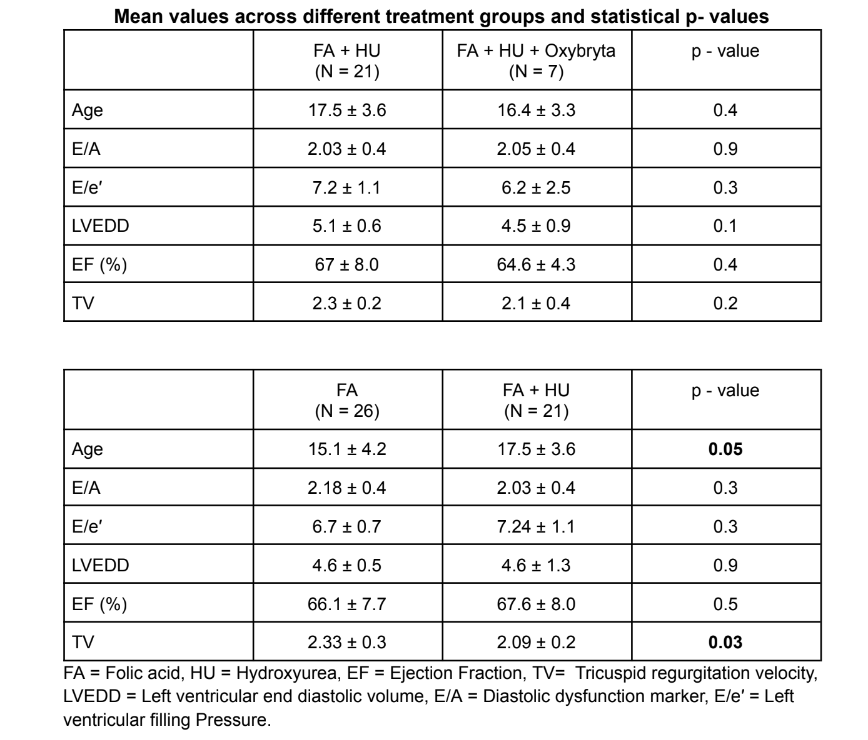Cardiology
Session: Cardiology 2
150 - Assessment of Cardiac Function in Sickle Cell Disease patients on Hydroxyurea versus Hydroxyurea with Oxybryta
Monday, May 6, 2024
9:30 AM - 11:30 AM ET
Poster Number: 150
Publication Number: 150.2723
Publication Number: 150.2723
- PT
Priya Thanneeru, MD (she/her/hers)
Resident
The Brooklyn hospital center
Brooklyn, New York, United States
Presenting Author(s)
Background: Sickle cell disease patients can victim long term cardiac complications like pulmonary hypertension and diastolic dysfunction. There are no specific guidelines for assessment of cardiac function in sickle cell disease pediatric patients. The cardiac manifestations are increased in the second decade of life. Hydroxyurea (HU) is known to show improved outcomes in cardiac function in sickle cell disease pediatric patients. Oxybryta prevents polymerization of HbS which decreases cardiac overload promoting improved cardiac outcomes.
Objective: We conduct this study to understand the variance in cardiac function with combined use of hydroxyurea and oxybryta vs. isolated use of hydroxyurea in the treatment of sickle cell disease pediatric patients. It also aims to understand the difference in cardiac outcomes among patients with hydroxyurea and patients on folic acid (FA) only.
Design/Methods: In 2020-2023, 53 patients with sickle cell disease between ages 10-20, underwent echocardiographic assessment and formed the study group. We considered the echo variables from the most recent echocardiogram for assessment of cardiac function. We divided patients into three subgroups, patients on folic acid, on hydroxyurea, and on combined hydroxyurea and oxybryta. Statistical analysis was performed using SPSS for windows (v28) and comparisons between the groups were made using the t-tests and ANOVA. All abnormal values have been reported relative to the age of the subject.
Results: We have 26 patients on only folic acid, 21 patients on folic acid and hydroxyurea, and 7 patients on folic acid, hydroxyurea, and oxybryta. Only, 7.5% (4 of 53) of patients have abnormal mitral E/A values and 1.8% (1 of 53)(FA) have abnormal mitral E/e values specific to their age. The abnormal E/A values are noted in two patients on FA and two on FA + HU. No statistical significance was observed between the echocardiogram values of patients on hydroxyurea vs. hydroxyurea and oxybryta. As expected, improved tricuspid regurgitation velocity has been statistically significant (2.09 ± 0.2, p= 0.03) with use of hydroxyurea compared to patients only on folic acid.
Conclusion(s): In this adolescent age group, Hydroxyurea contributes to improved tricuspid regurgitation velocity. No patients on Oxybryta have diastolic dysfunction markers. Hydroxyurea and Oxybryta are added to the older age group to prevent adverse cardiac outcomes. Limitations of sample size for the new drug group may have hindered the statistically significant outcomes. We require a prospective study to understand the significance of cardiac outcomes with these treatment options.

